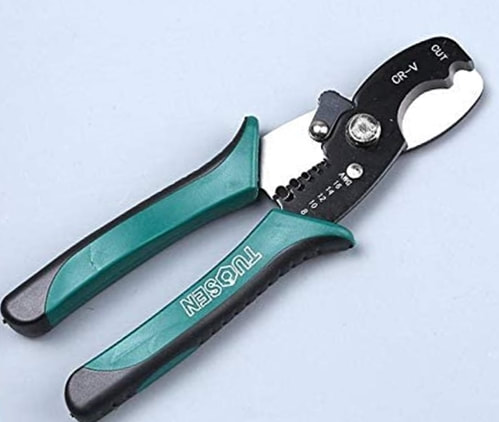@ Just John: yes please recommend a 60amp PSU, and also any other items/equipment/cables/connecters Id need to do a proper top or bottom balancing of 32 310ah cells? I currently have a fluke meter, thats it.
First abandon all thoughts of using alligator clips to connect your charger. You want good quality larger gauge wire with real quality crimped ring terminals or lugs, this will help a LOT with how many amps you can push, which means a shorter time spent top balancing.
If you live in a high humidity environment, you want to use tinned or plated wires and connectors. I recommend it even if you live in the desert like I do.
The highest quality marine grade wire (10 gauge, I use it all the time for 40 amps, doesn't get above room temperature):
Black:
Red:
If you live in the desert and keep things indoors like I do, this wire works well (not tinned, not rated for UV exposure, etc):
I use the 10 gauge because it is easy to find crimp connectors for, and generally speaking adequate for at least 40 amps if only used for short distances. When you get to larger gauge wire, you usually have to order crimp connectors individually, and use a different crimp tool.
Assortment of crimp connectors I used:
Crimp tool I used (note that this is for heat shrink connectors ONLY, you need a different crimp head for different types of connectors like nylon):
Will also has excellent recommendations, I'm just giving you what I have used (note that the Klein wire stripper Will recommends "Katapult" is what I use as well, best one I've found by far):
Do not buy cheap tools. You will thank yourself for years, and building a system will be MUCH EASIER. ( I make a commission for purchases made through the links below)
www.mobile-solarpower.com
Will gets a small percentage if you order from his links, and that helps keep the forum running, none of my links are sponsored in any way, but I generally link to the "Amazon Smile" version that does donate to a charity of your choice.
Most commonly ordered cells come with M6 sized holes, which nicely fits/works with 1/4 inch connectors (for 10 gauge wire and heat shrink connectors):
Most cheap power supplies used for top balancing with banana jacks will also use 1/4 connectors, just unscrew the outer banana jack cover, and put the ring terminal on, then screw it back on tightly for an excellent connection.
Cheap power supply I used (before I purchased better ones):
Slightly more expensive (but pretty much identical internally, Will recommends a different supply in his tools, but it is the same as this one, just a different brand name on the case):
DC Power Supply Variable 30V 10A, 4-Digital LED Display, Precision Adjustable Switching Regulated Multifunctional Power Supply Digital with USB Interface, Disply with Output Power Lab Grade: Amazon.com: Industrial & Scientific
smile.amazon.com
Review I did of the cheap supply above so you can be sure it won't die if run at full rated output:
First, a link to the cheapest 30 volt, 10 amp supply I could find on Amazon. There are others on occasion that go on special for a dollar or two less, but this one is pretty consistently the cheapest I could find. https://smile.amazon.com/gp/product/B07512KQDW/ An alternative that is not as...

diysolarforum.com
I tend to use Anderson connectors for things like connecting a charger, since alligator clips should NOT be used. Anderson connectors are polarized (so you don't accidentally swap positive and negative). The most common one I've used (for up to 50 amps):
Available in Blue, Gray, Red, Yellow, Orange, Green and Black. Recommended for use with 6, 8 and 10 gauge wire. Kit includes the housing and contacts needed for a single connector.

powerwerx.com
I hope that helps, let me know if you have questions.






